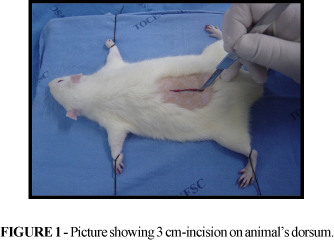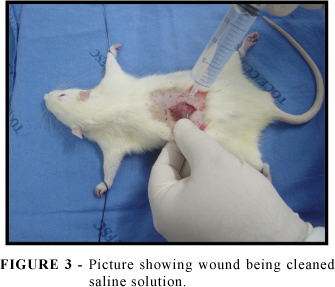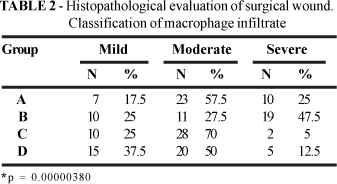PURPOSE: To evaluate the inflammatory response of potentially infected wounds treated with isotonic saline solution, chlorhexidine and PVP-I, seven days after surgery. METHODS: Thirty-two male rats were used, divided into 4 groups. All animals had their surgical wounds infected with a standard bacterial inoculum. Control group (A): animals had their surgical wounds sutured without any kind of cleaning. Saline solution group (B): animals had their wounds cleaned with saline solution. Chlorhexidine group (C): animals had their wounds cleaned with chlorhexidine. PVP-I group (D): animals had their wounds cleaned with PVP-I. Seven days after surgery, all the animals had their skin submitted to microscopic and macroscopic evaluation. RESULTS: Edema was found on all histological slices analyzed, as well as vascular proliferation and congestion. Groups A and D showed presence of mild neutrophilic infiltrate, and moderate lymphocytic and macrophage infiltrate. Group B showed severe neutrophilic, macrophage, and lymphocytic infiltrate. Group C showed moderate neutrophilic, macrophage, and lymphocytic infiltrate. CONCLUSION: Group D was the group which showed inflammatory infiltrate most similar to the group that was not submitted to treatment.
Antisepsis; Chlorhexidine; Povidone-Iodine; Wounds and Injuries
















